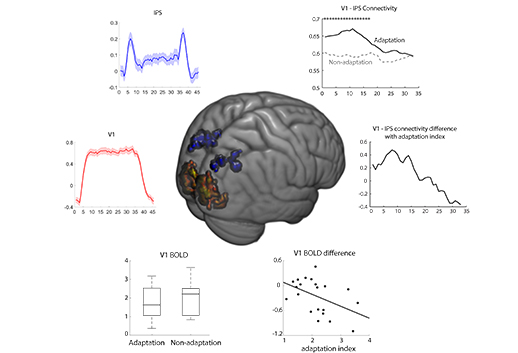 Adaptation is a key property of sensory processing, involving decreased neural responses and perceptual sensitivity due to prolonged exposure to the same sensory input. Yet, the brain networks involved in adaptive processing remain largely unknown. In this project, we combine behavioural measures of visual adaptation and functional connectivity during task and rest (as measured by fMRI). We find that while BOLD activity in adaptation decreases in primary visual cortex (V1), functional connectivity (FC) of V1 to occipito-parietal regions increases during visual adaptation. This FC increase is dynamic, showing stronger connectivity in the first rather than the last 15s of visual adaptation.
Adaptation is a key property of sensory processing, involving decreased neural responses and perceptual sensitivity due to prolonged exposure to the same sensory input. Yet, the brain networks involved in adaptive processing remain largely unknown. In this project, we combine behavioural measures of visual adaptation and functional connectivity during task and rest (as measured by fMRI). We find that while BOLD activity in adaptation decreases in primary visual cortex (V1), functional connectivity (FC) of V1 to occipito-parietal regions increases during visual adaptation. This FC increase is dynamic, showing stronger connectivity in the first rather than the last 15s of visual adaptation.

